#balloon sculptures nyc
Explore tagged Tumblr posts
Text
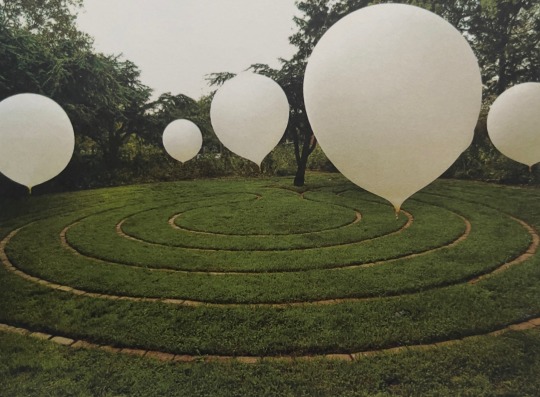
Snohetta: Stillspotting Guggenheim (2011) Location: New York City
#Snohetta#Stillspotting Guggenheim#art#sculpture#grass#new york#new york city#nyc#white#inflatable#balloon#2011
1K notes
·
View notes
Text
2024 Year In Review
2024 was another intense year. It was the first time in twenty years I wasn’t scoring a show for TV, and I got to concentrate on finishing albums and starting new projects. The year began with the premiere of my chamber symphony for Alterity Chamber Orchestra in Orlando and ended with guest-vocalizing with the Losers Lounge Band on a Bowie classic at Joe's Pub in NYC. I completed new albums for Xordox and Venture Bros, to be released in 2025. I released an Archer Soundtrack album and scored a Harry Smith film for L’Etrange Festival in Paris. Worked with Laura Wolf on a new project and premiered my Ensemble project at the Big Ears Festival in Tennessee. Recorded many overdubs for the next Foetus album, also to be released in 2025. Began a new series of sculptural wall pieces. We lost Phill Niblock in January and Steve Albini in May. We lost my colleague Roli Mosimann in September. I still woke up 5am in a panic on too many occasions. As a cultural omnivore, many sights, sounds and stimuli penetrated me.
Albums that I enjoyed in 2024
Sleepytime Gorilla Museum of the Last Human Being (Pelagic) Present This is not the end (Cuneiform) Tristan Perich/Ensemble 0 Open Symmetry (Erased Tapes) Drew McDowall A Thread Silvered and Trembling (Dais) Warrington-Runcorn New Town Development Plan Your Community Hub (Castles In Space) Extra Life The Sacred Vowel (Bandcamp) Geordie Greep The New Sound (Rough Trade) D-en Haut D-en Haut (Pagan) Aksumi Fleeting Future + Lines (Tonal Union) Louis Cole Nothing (Brainfeeder) Uniform American Standard (Sacred Bones) Zeal and Ardor Greif (Redacted) Shellac To All Trains (Touch and Go) Bangladeafy Vulture (Nefarious Industries) Ekko Astral Pink Balloons (Topshelf Records) Kee Avil Spine (Constellation) Fennesz Mosaic (Touch) Marewren Ukouk Round singing Voices of the Ainu 2012-2024 (Pingipung) Elysian Fields What The Thunder Said (Ojet) Melvins Tarantula Heart (Ipecac) Blood Incantation Absolute Elsewhere (Century Media) Aoife O’Donovan All My Friends (Yep Roc) Anna Thorvaldsdottir Aerial (Sono Luminus) Grace Bergere A Little Blood (Casa Gogol) Bob Vylan Humble As The Sun (Ghost Theatre 2) Andy Akiho Kin (Aki Rhythm) Yannis Kyriakides Hypnokaseta (Unsounds) Big | Brave A Chaos of Flowers (Thrill Jockey) The The Ensoulment (Cinéola / earMUSIC) Beth Gibbons Lives Outgrown (Domino) Beak >>>> / Kosmik Musik (Invada) Sebastian Tropic OST (Ed Banger) Chaser Planned Obsolescence (Decoherence Records) Jesus Lizard Rack (Ipecac) Ex East Islander Norther (Rocket Recordings)
Some books I enjoyed
Yuval Noah Harari Nexus Chris Stein Under A Rock Bill Buford Among The Thugs Patricia Highsmith The Talented Mr Ripley Sy Montgomery Soul Of An Octopus Malcolm Gladwell Revenge Of The Tipping Point
Some films I enjoyed
Furiosa ZEF Story Of Die Antwoord Joker Folie A Deux Kneecap Bad Faith Rebel Ridge Hundreds Of Beavers Ministry Of Ungentlemanly Behavior Teachers Lounge
I saw hundreds of concerts in 2024. Some highlights:
01.24.24 The Chisel at Bowery Ballroom 02.15.24 Jack Quartet play Austin Wulliman at Roulette Intermedium NYC. 03.09.24 Louis Cole / Genevieve Artadi at Brooklyn Steel 03.14.24 Kate NV at the Atrium at Lincoln Center 03.18.24 Sleepytime Gorilla Museum at Elsewhere in Brooklyn 03.23.24 Secret Chiefs 3 at Big Ears Festival 03.23.24 Hatis Noit at St John’s Cathedral in Knoxville TN for the Big Ears Festival 03.24.24 Kenny Wollesen’s Sonic Massage at Knoxville Art Museum for the Big Ears Festival 03.24.24 Elliott Sharp’s Void Patrol (with guests Cyro Batista and Colin Stetson) at Big Ears Festival 03.24.24 Aoife O'Donovan with the Knoxville Symphony Chamber Orchestra at the Big Ears Festival 04.01.24 Caleb Landry Jones at The Sultan Room i 04.06.24 Lovely Little Girls at Hart Bar. 04.19.24 Keith Fullerton Whitman performs ‘Playthroughs’ at Ambient Church 04.23.24 Mandy Indiana at Elsewhere in Brooklyn 04.26.24 Knower at the Brooklyn Bowl 05.04.24 Oberlin Contemporary Music Ensemble, directed by Tim Weiss, play Alex Paxton at Long Play Festival 05.04.24 Fuji|||||||||||ta at Long Play Festival 05.05.24 Ligeti Quartet perform Ligeti + Anna Meredith at Long Play Festival 05.17.23 Swans at Music Hall of Williamsburg 05.23.24 The Rolling Stones played at Met Life Stadium in New Jersey. 05.24.24 John Zorn’s ensemble, the New Masada Quartet 06.08.24 Rebekah Heller’s Bassoon Ensemble 06.25.24 Mdou Moctar at Bowery Ballroom NYC 07.12.24 C.Gibbs Review at Barbes 07.23.24 Bangladeafy at The Sultan Room in Brooklyn 08.18.24 Kid Congo and the Pink Monkey Birds at Union Pool 08.23.24 Alarm Will Sound play Marcos Balter’s Code-Switching, 09.30.24 Uniform at Bowery Ballroom 09.04.24 King Dunn aka King Buzzo (Melvins) and Trevor Dunn (Mr Bungle etc) at Music Hall of Williamsburg + White Eagle Hall in Jersey City. 09.13.24 Steven Bernstein and Nels Cline with the Arturo O'Farrill Latin Jazz Orchestra, playing James Bond themes. At Bryant Park in NYC. 09.15.24 PJ Harvey at Terminal 5, NYC 10.11.24 John Zorn’s Cobra in a 40th anniversary performance at Roulette Intermedium in Brooklyn 10.17.25 The The played at the Beacon Theater 10.22.24 Die Antwoord at Brooklyn Steel, 10.23.24 Boris played at Racket in NYC. 11.01.24 William Basinski for Age Of Reflections 11.04.24 Growing performing for Abasement at Artists Space in Manhattan 11.06.24 Pioneer Works presented a concert of Louis Cole Choral Music. 11.08.24 Lankum at Warsaw in Brooklyn 11.17.24 sunn o))) at Lincoln Center for the Unsound Festival 11.21.24 Extra Life at TV Eye. 11.24.24 Zeal and Ardor at Le Poisson Rouge NYC 11.25.24 Axiom, comprised of Juilliard students and conducted by Jeffrey Milarsky playing Solstice Ritual by Augusta Read Thomas 11.26.24 Blood Incantation at Elsewhere 12.01.24 Pharmakon’s awesomely unhinged performance at Union Pool. 12.11.24 Jesus Lizard played a great set at Brooklyn Steel 12.28.24 Grace Bergere / Jon Spencer / Gogol Bordello Capitol Theater Port Chester
Honorable mention to the multiple concerts I attended at the Abasement series at Artist Space, as well as multiple shows by S.E.M. Ensemble and Wet Ink Ensemble
#Extra Life#Zeal and Ardor#playlist#jg thirlwell#Augusta Read Thomas#Blood Incantation#Jesus Lizard#Grace Bergere#Jon Spencer#Gogol Bordello#Abasement#S.E.M. Ensemble#Wet Ink Ensemble#Pharmakon#Sleepytime Gorilla Museum#Ex East Islander#William Basinski#Fuji|||||||||||ta#Louis Cole#knower#uniform#Jack Quartet#Mdou Moctar#Tristan Perich#Warrington-Runcorn New Town Development Plan#chaser#Geordie Greep#Boris#Die Antwoord#The The
49 notes
·
View notes
Text
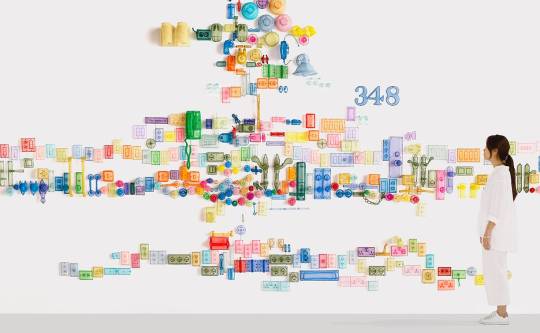
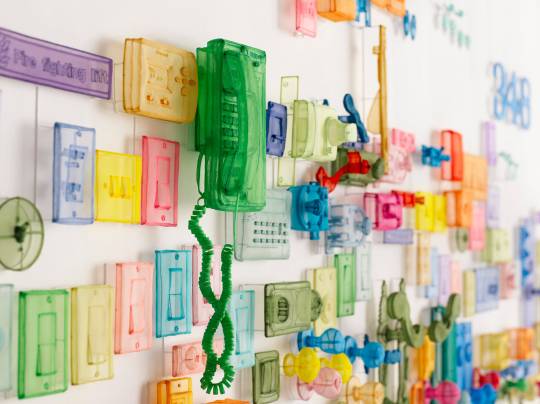
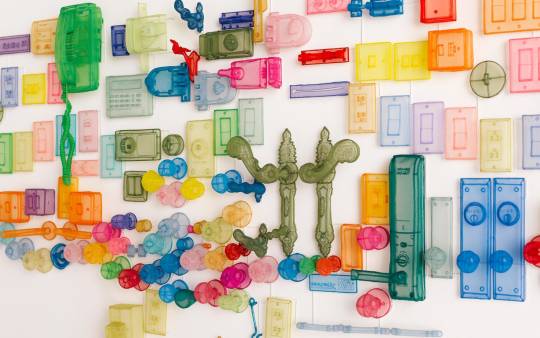
Detail of “Jet Lag” (2022) Do Ho Suh, courtesy of the artist and Lehmann Maupin, New York, Hong Kong, Seoul, and London
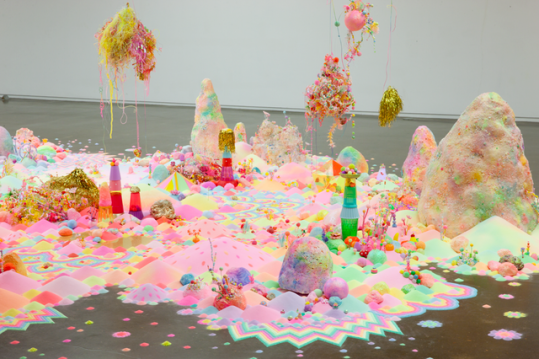
Australian artist Tanya Schultz works as Pip & Pop to create immersive installations and artworks from an eclectic range of materials including sugar, glitter, candy, plastic flowers, everyday craft materials and all sorts of objects she finds on her travels.
Her practice embodies both independent and collaborative processes across varying disciplines including installation, painting, wall-works and sculpture.
Often ephemeral, her meticulously constructed and highly detailed works embrace notions of abundance, utopian dreams and fleeting pleasure. She is fascinated with ideas of paradise and wish-fulfillment described in folk tales, mythologies and cinema.
Pip & Pop began as a collaboration with fellow artist Nicole Andrijevic in 2007. After four years Nicole left the partnership to pursue a different career. Tanya now works solo and with other friends and artists creating projects in many parts of the world.
Tanya has exhibited her work in Australia, Japan, Taiwan, Korea, Hong Kong, Germany, Netherlands, Mexico, the UAE and the UK.
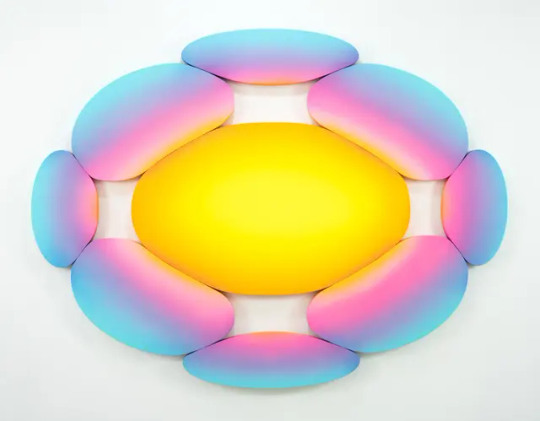
Artist : JAN KALÁB
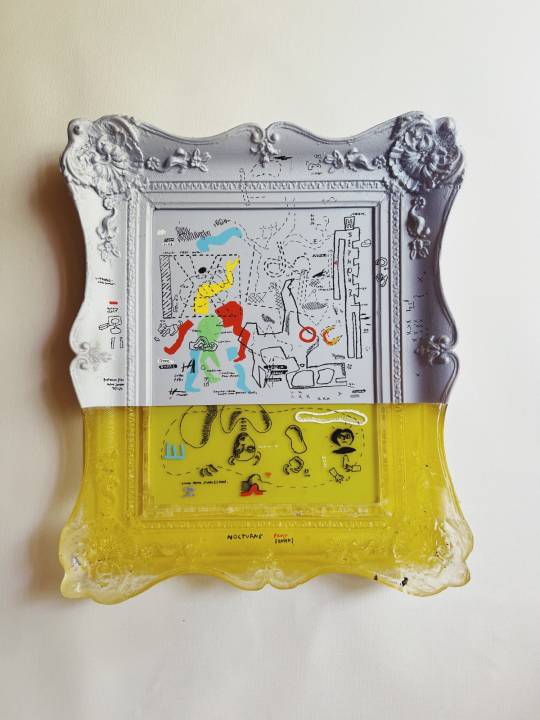
Artist : ESER GÜNDÜZ

Naoshima, Japan | Pumpkin, Yayoi Kusama

Naoshima, Japan | Pumpkin, Yayoi Kusama
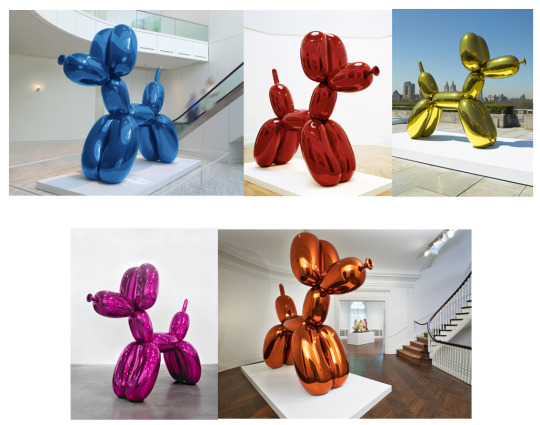
Balloon Dog,Jeff Koons
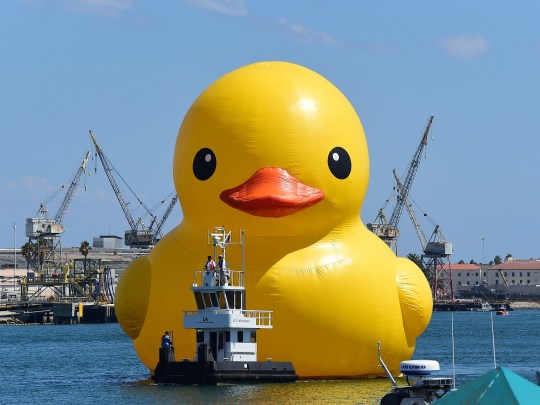
Dutch artist Florentijn Hofman‘s Rubber Duck
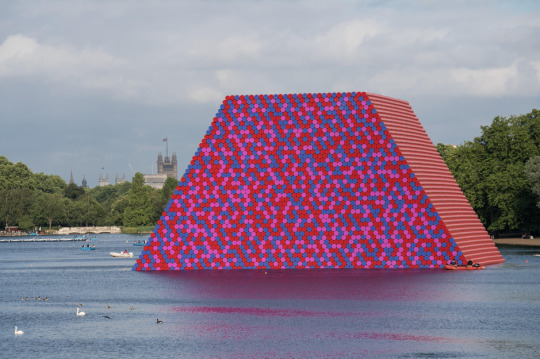
Christo and Jeanne-Claude, The London Mastaba, Serpentine Lake, Hyde Park

Bertrand Lavier's fountain
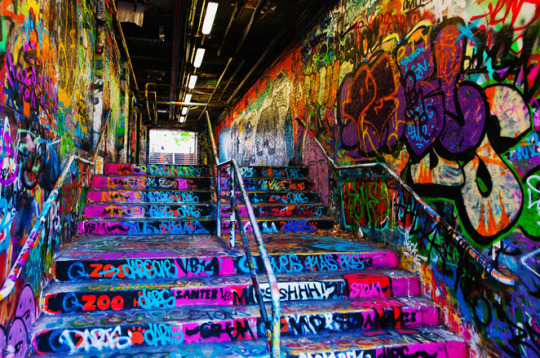
Sydney University Graffiti Tunnel

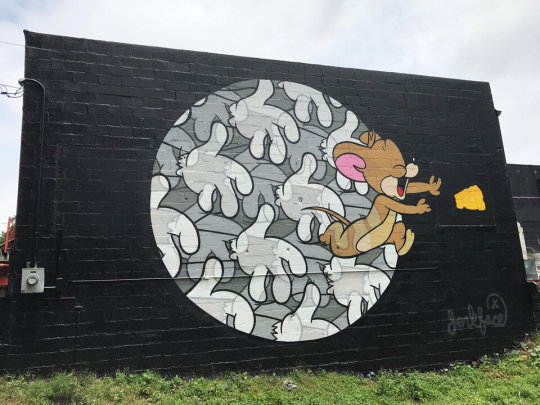
Jerkface 🚬 Artist NYC IG: incarceratedjerkfaces
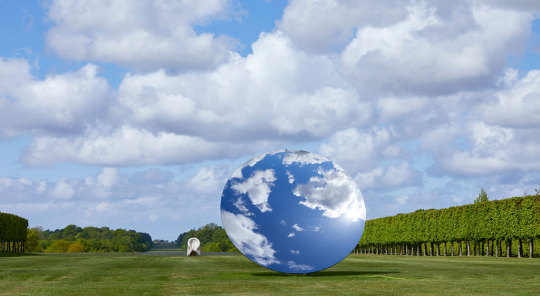
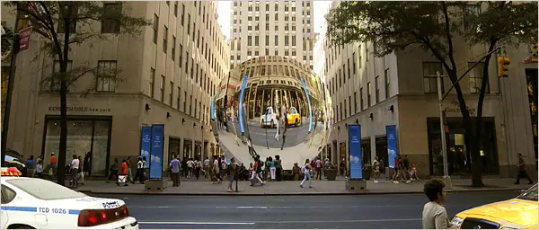
Public Art - Sky Mirror Anish Kapoor

Massive mural "Red Brick Building" on Shanghai Street by Italian artist Pixelpancho
8 notes
·
View notes
Photo









Adam Parker Smith
KIDNAPPING INCITES YEARS OF MURDEROUS DOOM Mylar balloons, resin, fiberglass, EVA foam At The Hole, 312 Bowery, NYC
#the hole#adam parker smith#kidnapping incites years of murderous doom#sculpture#art#the iliad#mylar balloons#nyc gallery#grumpy cat#prometheus
11 notes
·
View notes
Photo

Fools Gold “ #jeffkoons #artist #rabbit #real #fake #art #sculpture #project #balloon #animal #nosyalgia #nyc #museum #story #empty #nothing #2019 #technodrome1 https://www.instagram.com/p/B0ysWQOFrXF/?igshid=15s1177byvmn4
#jeffkoons#artist#rabbit#real#fake#art#sculpture#project#balloon#animal#nosyalgia#nyc#museum#story#empty#nothing#2019#technodrome1
0 notes
Text
Ian’s Case: A Personal Statement for Grad School Admission
Personal Statement, Ian Deleón
“He felt something strike his chest, and that his body was being thrown swiftly through the air, on and on, immeasurably far and fast, while his limbs were gently relaxed.”
It was more than a decade ago when I first read those words. Written by the American author Willa Cather, Paul’s Case: A Study in Temperament has always felt to me like an intimate account of my own life penned by a woman one hundred years in the past.
That is a feeling which makes me proud; that my personal whims, fears, and desires, could find their echo long ago in a story about a young man and his pursuit of a meaningful life. Because of it, I felt a pleasing sense of historicity at a time when I was struggling so much with my own.
I grew up in Miami Beach. Literally not more than a block away from water for most of my life. My father had emigrated from Cuba with his family in 1980. My mother had come on a work visa from Brazil a few years later. They met on the beach, had an affair, and I came into the world in May of 1987.
My life was marked with in betweenness from the very beginning. My parents’ relationship did not last long, so I grew up traveling between houses. I had two families. I was American, but I was also Cuban and Brazilian. I even have a Brazilian passport. I spoke three languages fluently, but I couldn’t dance salsa or samba. I felt at home with the working class immigrants and people of color in my neighborhoods, but I often had to work hard to prove I wasn’t just some gringo with a knack for foreign tongues.
[A quick note on Paul’s Case––If it happens that the reader is not familiar with the short story, let me briefly summarize it here: A disenchanted youth in turn of the century Pittsburgh feels increasingly alienated from his schoolmates, his teachers and his family. His only comfort is his position as an usher at Carnegie Hall, where he loses himself in the glamour of the art life. Having no drive or desire to become an artist, however, the dandy Paul makes a spur of the moment criminal decision and elopes to New York City. There, he is able to live out his fantasies in a financial masquerade for about a week’s time, until the authorities back home finger him for monetary theft. Learning that his father is en route to the city to collect him, Paul travels to the countryside and flings himself in front of a speeding train, musing about the elegant brevity of winter flowers.]
When I first encountered Cather’s short story I was blown away by the parallels I saw between my own life and Paul’s. In 2005, fresh out of high school, I was living mostly with my father as my mother had relocated to faraway West Palm Beach. I was an usher at the local concert hall, a job I cherished enough to volunteer my time for free. I became entranced by the world of classical music, opera, theater, and spectacle––often showing up for work early and roaming the performance spaces, probing high and low like some kind of millenial phantom.
In school, however, I had no direction, no plan. I had good enough grades, but no real motivation, and worst of all, I thought, no discernible talent. I probably resented my father for not being cultured enough to teach me about music, theater, and the arts. No one in my family had ever even been to a museum, or sat before a chamber orchestra. And it didn’t seem to matter to them either, they could somehow live blissfully without it.
Well I couldn’t. I began to mimic the fervor with which Paul immersed himself in that world, while also exhibiting the same panic at the thought of not being able to sustain my treasured experiences without a marketable contribution to them. But here is where Paul and I take divergent paths.
I was attending the Miami Dade Honors College, breezing my way towards an associate’s degree. I took classes in Oceanography, Sociology, Creative Writing, Acting and African Drumming. I was experimenting and falling in love with everything.
But it was my Creative Writing professor, Michael Hettich, who really encouraged the development of my nascent writing talent. Up until that point my ideas only found their expression through class assignments, particularly book reports and essays on historical events. My sister had always felt I had a way with words, but I just attributed this to growing up in a multicultural environment amongst a diversity of native languages.
As a result of that encouragement I began to write poetry, little songs and treatments for film ideas based on the short stories we were talking about in class. Somehow, thanks to those lines of poetry and a few amateur photographic self portraits, I was admitted to the Massachusetts College of Art & Design for my BFA program.
There, I attended classes in Printmaking, Paper Making, Performance Art, Video Editing, and Glass Blowing. I was immersed in culture, attending lectures and workshops, adding new words to my vocabulary: “New Media” and “gestalt”. I saw my first snowfall. I had the dubious honor of appearing at once not Hispanic and yet different enough. I was overwhelmed. I felt increasingly disenchanted and out of place in New England, yet my work flourished and grew stronger.
It was during this time that I developed a passion for live performance and engagement with an audience. I also worked with multi-channel video and sculptural installations. Always, I commented on my family history, grappling with it, the emigrations and immigrations. I even returned to those early short stories from Miami Dade, one time doing an interpretive movement piece based on The Yellow Wallpaper. Most often I talked about my father. He was even in a few of my projects. He was a good sport, though we still had the occasional heated political disagreement. We never held any grudges, and made up again rather quickly. It would always be that way, intense periods of warming and cooling. A tropical temperament, I suppose.
I continued to take film-related classes in Boston, but my interests gradually became highly abstracted, subtle, and decidedly avant-garde. I had no desire to work in a coherently narrative medium. This would eventually change, but for now, I let my ambitions and aspirations take me where they would.
I returned home to Miami for a spell after graduation. I traveled the world for five months after that. I moved back to Boston for another couple of years, because it was comfortable I suppose, though I was fed up with the weather.
Finally, I wound up in NYC. Classic story: I followed a charming young woman, another performance artist as luck would have it, a writer too, and a bit of an outsider. We were quickly engaged and on the first anniversary of our meet cute we were married on a gorgeous piece of land in upstate new york, owned by an older performance-loving couple from the city. Piece of land doesn’t quite do it justice, we’re talking massive tracts, hidden acres of forest, sudden lakes, fertile fields, and precocious wildlife. As they say in the movies, it really is all about location, location, location.
Nearly all of our significant personal and professional achievements in the subsequent years have centered around this bucolic homestead. After meeting, courting, researching and eventually getting married there, we soon decided we would stage our most ambitious project to date in this magical space––we would shoot...a movie.
We hit upon the curious story of an eighteenth century woman in England called Mary Toft. Dear Mary became famous for a months-long ruse that involved her supposed birthing of rabbits, and sometimes cats. The small town hoax ballooned into a national controversy when it was eventually exposed by some of the king’s physicians. My wife and I were completely enthralled by this story and its contemporary implications. Was Mary wholly complicit in the mischievous acts, or was she herself a sort of duped victim...of systematic abuse at the hands of her family, her husband, her country?
We soon found a way to adapt and give this tale a modern twist that recast Mary as a woman of color alone in the woods navigating a host of creepy men, a miscarriage, and a supernatural rabbit.
Over the course of nine months, our idea gestated and began taking the form of a short film screenplay. This was something neither of us had done or been adequately trained to do before. But we knew we wanted it to be special, it was our passion project. We knew we didn’t want it to look amateurish––we were too old for that. So we took out a loan, hired an amazing camera crew, and in three consecutive days in the summer of 2017 we filmed our story, Velvet Cry. It was the most difficult thing either of us had undertaken...including planning our nuptial ceremony around our difficult families.
It was an incredible experience––intoxicating––also quite maddening and stressful. But it was all worth it. Because of our work schedules, it took us another year to finish post production on the film, but throughout that process, I knew I had found my calling. I would be a writer, and I would be a Director.
Perhaps I had been too afraid to dream the big dream before. Perhaps I had lacked the confidence, or simply, the life experience to tackle the complexity of human emotions, narratives, and interactions––but no longer. This is what I wanted to do and I had to find a way to get better at doing it.
In the intervening months, I have set myself on a course to develop my writing abilities as quickly as I could in anticipation of this application process. I know I have some latent talent, but it has been a long time since I’ve been in an academic setting, and in any case, I have never really attempted to craft drama on this scale before.
I’ve read many books, listened to countless interviews, attended online classes, and most importantly, written my heart out since relocating down the coast to the small college town of Gainesville in Central Florida with my wife in June of 2018. It was through a trip to her alma mater of Hollins University that we learned about the co-ed graduate program in screenwriting a few months ago. After all the debt I accrued in New England, I didn’t think I would ever go back to college, though I greatly enjoyed the experience. But what we learned about the program filled me with confidence and a desire to share in the wonderful legacy of this school that my wife is always gushing about.
Our Skype conversation with Tim Albaugh proved to be the deciding factor. I knew instantly that I wanted to be a part of anything that he was involved with, and I had the feeling that my ideas would truly be nurtured and harnessed into a craft––something tangible I could be proud of and use to propel my career.
I continue to mine my childhood and adolescence in Miami for critical stories and characters, situations that shed light on my own personal experience of life. I’ve found myself coming back to Paul’s Case. No longer caught up in the character’s stagnant, brooding longings for a grander life, I’m now able to revisit the story, appreciating the young man’s anxieties while evaluating how it all went so fatally wrong for Paul. There was no reason to despair, no cause for lost hope. I would take the necessary steps to become the artist I already know myself to be. The screenplay I am submitting as my writing sample is a new adaptation of this story, making Paul my own, and giving him a little bit of that South Florida flavor.
I will close by reiterating how I have visited Hollins, and heard many a positive review from the powerful women I know who have attended college there. As a graduate student, I know Hollins can help me to become a screenwriter, to become a filmmaker. This is the only graduate program to which I am applying––I have a very good feeling about all this.
I want to be a Hollins girl.
2 notes
·
View notes
Photo

"By displaying the deceptive realism of the front of the sculptures, while stripping the balloon of its fragility from the back, the statues exploit the tension between real and fake."
-Grumpy Cat Balloon Sculptures Gives Koons a Run for His Money
Art-in-Buildings artist Adam Parker Smith was featured in The Creators Project! You can see his work at our 125 Maiden Lane exhibition space!
#Adam Parker Smith#Jeff Koons#Creators Project#125 Maiden Lane#public art#balloon#greek art#statue#contemporary art#mylar#real vs fake#grumpy cat#koons#sculpture#art nyc#nyc artist
5 notes
·
View notes
Photo

#Repost @ruthlesley ・・・ When you blend into the balloon sculpture ... #thedress #the hair #pride #party #w42st #hellskitchen #nyc #balloons #rainbow #eatliveplayhk https://ift.tt/2JMGztD via W42ST instagram
1 note
·
View note
Photo

The next time you fly through NYC's LaGuardia Airport things may look a lot different! LaGuardia Airport's new Terminal B complex is now home to four spectacular public art installations by internationally acclaimed artists. Jeppe Hein, Sabine Hornig, Laura Owens and Sarah Sze created site-specific works for the Terminal. Danish artist, Jeppe Hein, artfully placed 70 colorful "party balloons" throughout the Terminal B concourse along with three bright red benches. Sabine Hornig has created a cathedral window type effect using enormous transparent photo-collages on a glass façade. The 1100+ photographs of New York City feature quotes by Fiorello La Guardia. The title of Laura Owens's mural for Terminal B's largest wall is actually a pizza emoji separating the letters I and NY. Using handmade glazed ceramic tiles Owens has situated referential shout-outs to NYC's Boroughs. Sarah Sze's Shorter Than The Day, is a monumental spherical sculpture that resembles a globe. Hundreds of photographs of the sky above New York City from a single day appear to swirl in mid-air. 🗺Colonial Capital Tours ☎️ 800.334.3754 💻 www.ColonialCapitalTours.com 📧 [email protected] #studenttours #schooltrips #grouptours #educationaltours #fieldtrips #daytrips #onedaytrips #studentgroups #schoolgroups #educationalstudenttours #nycdoevendor #seniortrips #multidaytrips #studenttrips #educationalprograms #remotelearning #virtualvisits #virtuallearning #funathome #onlinelearning #learnathome #onlineactivities #onlineprograms #virtualtravel #virtualtours #laguardiaairport #lga #publicart #nyc #colonialcapitaltours @colonialcapitaltours
0 notes
Photo

When I was looking up which show we wanted to see as we were pulling into NYC, the bronze horse skeleton sculpture piqued my interest. The Hans Haacke: All Connected retrospective at the New Museum ended up being a perfect outing for our whole family. I was impressed with the larger than life horse, “Gift Horse” originally unveiled at Trafalgar Square with a strip of stock market ticker tape tied in a bow at the knee. It was entertaining for Asher, with one whole floor devoted to floating balloons, ice machines and fans blowing underneath light fabric. Russell was interested in the social issues tackled and addressed through sculpture. The Invisible Hand of The Market (2009) was a Disney-esque waving hand (above) which was appropriately the first and last thing we saw. On view through January 26, 2020.
0 notes
Text
The city of Christchurch is a patchwork of pedestrian shopping areas and public art and empty construction sites. The town is built around the Avon River, and the entire riverbank is a beautiful green park with lots of public sculptures. The historical cathedral was one of the buildings that was split in two by the earthquake, and so Cathedral Square, a central park in the city, has a feeling of incompleteness. But the city is clearly trying very hard to keep Christchurch attractive.
OLYMPUS DIGITAL CAMERA
OLYMPUS DIGITAL CAMERA
OLYMPUS DIGITAL CAMERA
OLYMPUS DIGITAL CAMERA
OLYMPUS DIGITAL CAMERA
Their main shopping area is made of metal shipping containers, which actually is a fun looking way to have lots of little pop-up stores. We ate lunch at one of the outdoor seating areas and walked around the brightly colored storefronts. After lunch, our group splintered again, with half of us going to find the Earthquake Museum, and half going to try to catch the mountain gondola outside the city in a town called Lyttleton.
Unfortunately, we found out that the museum was moved too late and it had closed by the time we had arrived at its new location. I’ll be going today, so it worked out. With a few more hours until we were planning to meet up with the rest of our group, we continued to walk around the city.
One of the things that struck me about Christchurch is how clean it is. There’s very little litter, the streets and sidewalks are nearly spotless, and the vast majority of graffiti was street art. I don’t have many pictures, but there are numerous giant murals all over the city. There was very little honking, though construction noises pervaded everywhere. Additionally, there are no panhandlers or homeless people that we could see. I’m not sure of the politics behind this, but it made walking around pleasant. In fact, I saw a public bench that had edible plants growing around it, with signs encouraging people to eat them. I don’t think such a thing would ever be built in NYC.
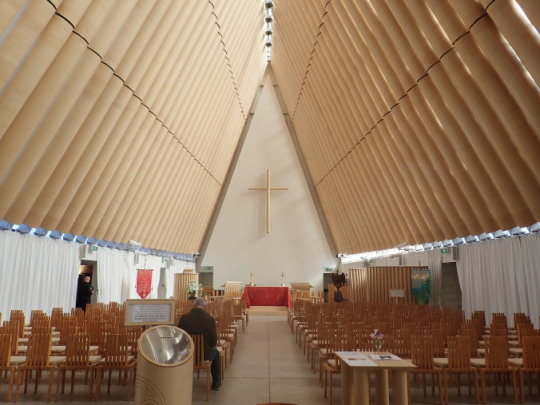
OLYMPUS DIGITAL CAMERA
Our next destination was the “Cardboard Church” a replacement cathedral while the old one is being repaired. It was designed by a Japanese “emergency architect,” and it is a very simple, large A structure with most of its main supports made of large cardboard tubes. It wasn’t very attractive. But there was a boy’s choir practicing hymns, and their voices gave the space an aura of serenity and reverence. Nearby there was a memorial to those that died in the 2011 earthquake, an area of empty chairs of various types, all painted white. The rest of the afternoon and evening was spent walking around the downtown, and then we met for dinner.
The following morning, we all met in the hotel lobby at 5:15 sharp with our bags all packed. We were ready to be sent off to Antarctica. Sometime overnight, the hotel’s internet network went down (allegedly caused by malware on a guest’s USB stick?). We had heard rumors that the weather down South was too rough and that we’d be delayed at least a day, but no news had gotten through to us. A shuttle pulled up, and we all started gathering our bags. The driver rushed out and told us there was a 24 hour delay, but that we’d have training at 7:30. We all shrugged and went back to our rooms.
We arrived back at the Antarctic Center at 7:30 for a series of powerpoint presentations and videos that taught us about fire safety, health, proper waste disposal, and the rules for driving light vehicles. The fire officer was entertaining, though he made it seem like fires in McMurdo occur daily. Antarctica is the driest, windiest place in the world, and there’s a lot of flammable material in a tight space in the research stations. Fire doesn’t really care if it’s 100F or -50F, and it always wants to get behind you. The medical officer sent in a video presentation of him talking at his desk in McMurdo. He seemed no-nonsense and glib, like Doctor McCoy from Star Trek. It’s probably not too dissimilar a job. Condoms cannot withstand extreme cold, so don’t keep them in the outer pockets of your parka! Waste disposal is complicated and rigorously eco-friendly, but it will take some getting use to all the very specific and enforced sorting rules. The motor vehicle presentation was a very snazzy government instructional video, with early 90s easy listening jazz and smooth male narrator. It was pretty funny.
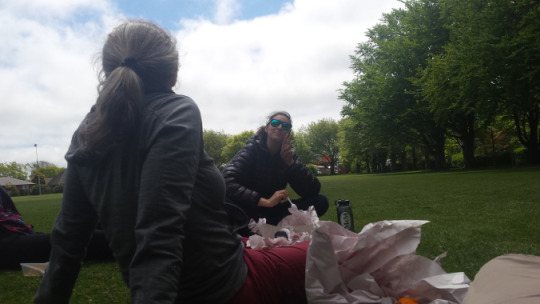
Back near the hotel, me and a few of my group-mates had a very lackluster lunch of fish and chips from a hole in the wall across from the hotel, eaten while wandering around the suburbs of Christchurch looking for a spot to sit down (we eventually found a small park).
We journeyed downtown to go to Quake City, a museum devoted to showcasing information about the February 2011 earthquake, and the rescue and repair activities afterwards. We learned that in Maori mythology, Ruaumoko, the god of earthquakes, is still a fetus inside the womb of the mother Earth, Papatuanuku. When he kicks, earthquakes occur on the surface. There are records of large earthquakes from the start of European colonization of Canterbury region, NZ, two hundred years ago . Nearly every ten years, a large earthquake destroys parts of Canterbury. The most recent disasters, the Sept 2010 earthquake and the Feb 2011 earthquakes destroyed 80% of Christchurch’s downtown area. Historic cathedral spires, rose windows, and the historic City Council building all fell down. However, it seems like parts of these buildings fell down in previous earthquakes too. Without belittling the trauma and devastation, why did they keep building tall spires and stained glass windows that would then be destroyed? The museum had a number of testimonies of people who experienced the earthquake first hand. One father and daughter were at a public pool, and the water sloshed like a tsunami around the building. One office worker devised a way to repel down using ropes. A woman in an office building was trapped for five hours in the rubble and lost several fingers.
The efforts of numerous organizations and thousands of people have made the city of Christchurch a pleasant place to live. There has been a huge effort to fill the empty spaces with art. In many ways, it is inspiring to see the resilience and cooperation of the New Zealanders in the face of such a disaster. On the other hand, it should not be optional in these areas to build earthquake-resistant architecture, and I think the fact that some of these historic buildings have been rebuilt multiple times raises the question of whether it’s wise to rebuild things exactly as they were.
Our next stop was the Canterbury Museum, a natural history and history museum housed in a very stately stonework building on the edges of the Botanical Gardens and Christ’s College. Right across the street, there is a very beautiful building which I think is the art center, but there’s quite a lot of signage about Ernest Rutherford and his discovery of the electron. I hadn’t realized it, but he’s a New Zealander.
The Canterbury Museum is very similar to the older exhibits in the NY American Museum of Natural History. Musty stuffed animals, Maori artifacts, and historic Antarctic artifacts were the exhibits that we sought out and enjoyed. There was an exhibit devoted to the moa, a giant bird that looks like a mix between a kiwi and an ostrich that the Maori hunted to extinction. The next hall was split between Maori artifacts and early European colonial artifacts. There was a room that focused on Maori familial lineages, which was interesting just for having hundreds of pictures of Maori women over the years. There was a lot to learn just from the evolution of these women’s names and appearances over the last two centuries, from Maori to Western names and from Maori hairstyles and clothes, to Western dress in the early-mid 1900s and then back to Maori dress.
My favorite exhibit of course was the Antarctic history exhibit. There were old photographs and artifacts of the seal hunters of the late nineteenth century and of the heroic age of exploration. Apparently Scott did an aerial survey of the Ross Ice Shelf in 1904 from a hot air balloon, like our project but 100 years ago. I always have mixed feelings about Heroic-age explorers. They did incredible things and are testaments to human bravery, but their motivations were so nationalistic. The most glaring mistakes they made were because they didn’t listen to other people’s advice. Shackleton was told repeatedly that sailing to the Ross Sea so late in the season would get his ship trapped in ice, and that’s what happened. Scott felt sled-dogs were “unsportsmanlike” so he brought ponies and then when they died and had to be eaten, the sleighs were pulled by them by hand. I don’t know. Hindsight is twenty-twenty. Their old-fashioned cold weather gear is entertaining to look at.
That evening we had dinner at the hotel restaurant. We talked about our chances of finding Scott’s corpse in the Ross Ice Shelf’s radar images (none, so stop asking, a human body is way too small to be picked up by ice-penetrating radar). The day ended, and it was unclear if we would be traveling to Antarctica the following morning, or staying in Christchurch for an undetermined amount of time. I was ready either way.
Not Enough Time in Christchurch (but then we got more time, part 2). The city of Christchurch is a patchwork of pedestrian shopping areas and public art and empty construction sites.
1 note
·
View note
Text
July 6th 2019
Well snap I got too far behind and have too much to talk about. Summer is here, and half over already!!! So we left off with the end of school which was crazy and busy and we were all so relieved when it was over. Lily did get a goal on her last soccer game!!! Penny got one too! It was a really great soccer season we ended with a big water balloon fight. One of the moms even made a little canvas painting thing thanking rob for being their coach!
This year at the end of the year I don't think anyone was sad it was over like before. Everyone was very very ready for summer! We started off the summer docking head first into the major project we wanted to accomplish, which was building the shed. We got it almost totally finished in a little less than a week then stopped and waited until our nyc trip was over and painted it. So we got the shed finished and tried to just spend a lot of time doing fun stuff with the kids, zoo, library reading program, and splash pads, went on some hikes, stuff like that. We got them an above ground pool which has turned out to be a really great purchase!
So the third week of summer vacation rob and I went to NYC for 3 nights! The kids stayed with gwen. So the trip was better than I had imagined. I loves the city. I had been worried about getting around but the subway was so simple it was really convenient. We took the subway in from the airport so when we walked up the stairs we were right in the middle of the coty and actually directly in front of the Ed Sullivan theater where Colbert is filmed!! We were able to get to our hotel and sit down and eat dinner before we got in line to see the show. We were in line for like 4 hours, after a long day of travel it was pretty brutal but we were so excited! The show was awesome, like really probably one of my favorite days ever. That night we walked to times square but came back and went to bed early because we were worn totally out. The next day we got up early and went to the world trade center memorial. It was really an overwhelmingly emotional place to be but I was so happy to get to visit. We saw this sculpture that has been in front of one of the towers before and the top was all melted and bent apart, it was surreal to see. I had kind of planned to go into the memorial museum but we decided to go on top of the One World Trade Center instead, which was a little more exciting and less depressing:/. The one world trade center was so neat though, we got such good views of the statue of liberty and all of manhattan. After we were finished there we went south to see the statue of liberty from the pier. It was something I have always wanted to see it seemed smaller than I thought, but we didnt go right up to it. Someday I hope to take the kids to nyc and when we do that we will take them to the statue and go inside. After that we got back on the subway and went to Chinatown and little Italy. We didnt stay there too long we were a little disappointed, it wasn't anything like Chinatown in san Fran and we just wernt having fun so we decided to see more things. We got back on the subway and went to the high line, which is an old above ground subway line that they have made into a walkway and garden. I loved it!! It was more busy than a lot of the things we did but it was so beautiful. Made me want to live there and walk it everyday haha. We walked to the empire state building then north past the library which was one of my favorite places! We walked past trump tower too and then made it to central park. We walked through central park had a drink at a tavern. Then went north to strawberry fields and saw the place where John Lennon lived and was killed. The strawberry fields was neat there was a man there just playing a bunch of his songs. We walked through about half of central park I loved seeing all of these places from movies. We were beyond pooped from all the walking at this point. We went back to the hotel. The next day it was raining but we had planned for that and were going to the natural history museum, it was beyond what I had imagined, robs favorite was all the space stuff, I loved seeing all the dinosaurs though, like for real so cool. I hated then that we didnt have the kids though. :/ I'm putting that on the list of places we have to bring the kids to at some point. By lunchtime the rain had stopped and we were done at the museum, we went to shakeshack which was by far my favorite food we had in nyc haha. Maybe we were starving or maybe it was just that good we will never know. We walked through central park and looked around some more. I was excited to see the carousel but it wasnt open. After that we went back to times square and really looked around and took everything in. Over all it was a the best trip ever I am soo happy we finally made it happen. It really was awesome for rob and I to have a minute to just be a couple again too, though I was really really ready to get back home to the kids!
So after we flew in my mom picked us up and we took the kids to see kids bop live, their first concert!! It was so cute, lily fell asleep half way through haha. The danced and just had the best time. Soo happy to be back home with them! So while we were at the concert rob went to Mathis brothers and picked up our couch that had come in. Idk how he was able to do it alone but he did. I love this couch so much too yay so stinking happy.
So this summer has been super crazy weather wise. In the spring we got a ridiculous amount of rain and everything flooded, the Arkansas river was way too high. So we had planned on camping and floating the river and spending a lot of time at the lake in grove with my mom but we still cant get to cindy house at rhe lake even now in July. And the river is too high to be safe for the kids and the campsites and beach in oologah are too flooded. So we have had to adjust. We have been playing in the pool a lot we took them mini golfing in tulsa which I had been wanting to take them forever. So also took them to urban air (sigh) which is a trampoline park we had only been there about 10 minutes and I fell and dislocated and broke my arm. Blah, I felt so stupid. But it is what it is. I felt really really awful for about a week after it happened but I'm slowly getting better. I have been down and rob has had to take over a lot but he has been fantastic of course. He really is too perfect. He took all the kids back to urban air the next day and I stayed in bed and slept Haha. They loved the place though, they have rock walls and stuff that max and penny were able to get to the top off. I was pretty impressed.
So we just had the 4th of July, we stayed at home, I took the girls to the collinsville parade while max had a cubscout thing then that night we watched the fireworks from our back porch. The kids all lit off fireworks, I couldn't believe it but every kid lit their own fireworks, even lily who is 4 right now lit fireworks. I couldn't believe how brave they all were.
So for the rest of the summer as I am healing Rob is trying to get a few projects finished around the house. We are going to broken bow in two weeks!
0 notes
Photo

Great suprise birthday party today! Thank you Sonia for planning this epic day. I have to thank @franky_cammarata at @brixxandbarley for the awesome brunch spread! I want that food everyday! Big shout out to Pammy Cakes @stackscakes #LBNY for the extraordinary custom #technics1200 cleaver cake! Its looked & tasted amazing!!! Thank you to @art_balloons_decorations for the incredible balloon sculpture! It was massive & beautiful, i mever seen anything like it. So creative, personalized & unique. Much love to all my family & close friends that came out to celebrate with me & for all the gifts, im overwhelmed i love you all !! ❤🤘🏻💚🙏 #cake #birthday #birthdayparty #longisland #longislandny #lieats #lifoodie #food #love #events #myilea #mpi #nace #meetingprofs #corporateevent #tradeshow #foodfestival #dj #chef #eventplanner #entertainment #celebritychef #djchef #foodnetwork #topchef #foodporn #eventpros #celebritydj #miami #losangeles #california #lasvegas #nyc (at Brixx & Barley) https://www.instagram.com/p/BvaVLA2HV6h/?utm_source=ig_tumblr_share&igshid=x33g4hklvq4g
#lbny#technics1200#cake#birthday#birthdayparty#longisland#longislandny#lieats#lifoodie#food#love#events#myilea#mpi#nace#meetingprofs#corporateevent#tradeshow#foodfestival#dj#chef#eventplanner#entertainment#celebritychef#djchef#foodnetwork#topchef#foodporn#eventpros#celebritydj
0 notes
Photo

(image above- Derek Fordjour, Two Party System, 2019)
JRRNNYS, Derek Fordjour's solo exhibition at Night Gallery, includes new paintings and sculptures that "advance explorations of earlier works, returning to the subjects of crowds and athletic competitions to illustrate the entrenchment of power relations, capital flows, and racial inequality within the economic and social systems of the United States". The paintings are made of multiple layers of painted cardboard and newspaper that are then scored and sections are removed.
This interview with the artist from artnet goes into more detail on his fascinating process and the reasons behind it.

Signing Day, 2019.

The centerpiece of the exhibition is the installation STOCKROOM Ezekiel.
From the press release-
... The work takes its name from the 1884 letters of Ezekiel Archey, an 25-year-old unjustly held as a prisoner sent to labor at the Pratt Coal Mines in Birmingham. Archey’s letters, sent to the Alabama inspector of prisons, are among the most prominent primary-source documentation of the ravages of the convict leasing system, acknowledging the stark preponderance of black prisoners and the gruesome treatment of the laborers by their supervisors. Fordjour’s installation responds to Archey’s letters by creating a walled-in structure comprised of over 1,000 individually constructed compartments – cells, as the artist calls them – painstakingly organized with a variety of found and handmade objects, though by a logic that is never explicated to the viewer. Lights in individual cells blink on and off variously, while small speakers let forth bursts of music by the dictates of a rigid but similarly inscrutable pattern, luring the viewer in the eye-popping manner of the carnival game or game board. The intermittent sounds of music range from the early field recordings of 20th century ethnomusicologist Alan Lomax to 80s- and 90s-era drug dealer anthems to modern day Trap music, a largely Southern genre of hip-hop inspired by the illegal drug trade. The viewer has entered a gamelike arena whose rules remain obscure. With time, the objects that populate the shelves come into focus. Some cells contain familiar items – balls extracted from various sporting contests, the lottery and billiards, cameras, hood ornaments from luxury sports cars, decommissioned prison uniforms, and hundreds of hand blown glass balloons, among others. Others are closed off with metal grating, while still more are lined with the ubiquitous fabrics of luxury designers, invoking the aspirational quests of poverty-stricken urban communities. Finally, many cells contain small busts of the same expressionless figure, molded from resin, copper, metal, plaster, dirt, and salt – materials which stand in for the most prominent products from the era of convict leasing, including the coal mines and steel plants of of Alabama and the molasses distilleries of Florida. Taken individually, the contents of these cells suggest luxury and labor, surveillance and displacement, strategy and competition; as a whole, the work suggests the laws of chance taking place within the confines of a framework that is as unknowable as it is oppressive. From the era of Pig Laws to our current three-strikes mandatory sentencing, educational lotteries to modern day sporting empires, Fordjour’s installation points to the tragic persistence of unjust structures that define American life, employing contemporary commodities while invoking history. At once mournful and flickering with possibility, the installation conjures notions of personal loss and gain within the macro-scale context of the inscrutable systems that have determined the fates of black and brown people through the nation’s history.

STOCKROOM Ezekiel, 2019 Image via Night Gallery
This exhibition closes 3/2/19.
If you are in NYC you can see one of Fordjour's new works, Half Mast, as a public art installation for the Whitney Museum. The large vinyl reproduction of his painting can be seen at the intersection of Gansevoort and Washington Streets, directly across from the Whitney and the High Line.

Derek Fordjour, Half Mast. Image via Whitney Museum
#derek fordjour#night gallery#los angeles art shows#art shows#los angeles#painting#sculpture#whitney museum#new york art#art#new york city
0 notes
Photo

Jeff Koons' Seated Ballerina. (NYC, New York) - Taken 5.15.17. ▴ ▴ ▴ ▴ ▴ #seatedballerina #jeffkoons #rockefellercenter #nyc #art #newyork #newyorkcity #ballerina #manhattan #sculpture #publicart #midtown #rockcenter #koons #streetart #ny #inflatable #travel #rockfellercenter #nyclife #rockefellerplaza #artist #balloon #photooftheday #contemporaryart #artwork #nycart #iloveny #rockefeller #instadaily
2 notes
·
View notes
Text
COFFEE TALK [with Michael Kauffman]
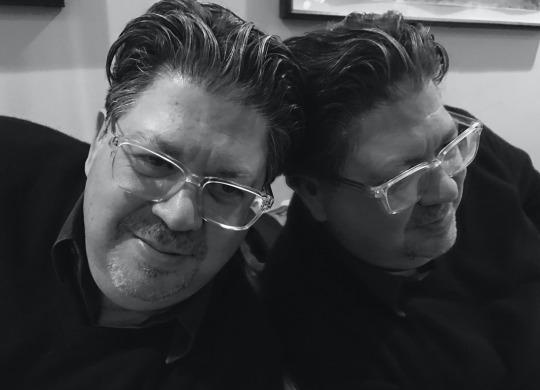
“I’ve worked in music and technology during my career, largely in sales, marketing, and PR roles. I love to connect artists and companies with fans and customers -- and have been doing that in tech (YouTube on the marketing team and at Google via corporate communications), at start-ups like RightsFlow (a rights management and licensing company acquired by Google), and earlier in my career at labels and distribution companies like UMG, Verve, BMG, and Windham Hill.”
Q: What are a few of your favorite “industry moments?”
I loved spending time on the road with artists earlier in my career. While at Windham Hill in the mid-90’s, I joined Keola Beamer, Ledward Kaapana, and a few other Hawaiian slack key guitar icons on a series of dates up the eastern seaboard. It was one of the first times I spent a lot of time with a band who I had limited prior knowledge about. Pre-internet days. Not only did I fall in love with that music, but I got to introduce the band and crew to PA-breakfast-fave scrapple while eating at the Melrose Diner in Philadelphia. While at Verve, we arranged for the amazingly gifted vocalist Al Jarreau (RIP Al) to host the Music Biz Annual Conference Awards Dinner one year concurrent with his new release. Al arrived in San Antonio with a serious bout of the flu, and we didn’t know whether he’d be able to speak, let alone take the stage. But after a few hours of sweating it out, focused rest, home-brewed tea, and a mind-over-matter attitude, Al took the microphone and blew everyone away with his grace, wit, and charm.
I was fortunate during those years at Verve to work with a top-notch sales team (Tony Pellegrino, Jon Vanhala, Lisa Hopkins, Mark Callaghan, Jeff Lusis, Kim Smith, Missy Iredell), self-branded “The Jazz Pack”. We adopted a song-and-dance approach to many of our sales presentations and had a blast singing-while-selling our releases (I like to say that we were the last of the singin’ sales guys). Flashback to Los Angeles in 2001. The Universal Music and Video Distribution Conference was being held at the Century Plaza Hotel, and we were scheduled, along with all the other UMG labels, to present our upcoming releases to our friends at distribution. Instead of a generic video presentation, we opted to host an awards show called “The Tommy’s” (named for our beloved label Chairman Tommy LiPuma, industry icon, producer, and true music maker) packed with curated categories, spoof videos, and actual live performances highlighting our artists and releases.
The opening song-and-dance number involved us wearing Adidas tear-away track suits worn over tuxedos, doing a bit of choreographed dancing along with a backup crew consisting of the XFL’s LA Xtreme cheerleading squad. It culminated with Tommy himself being led through the curtains of the stage and down to his front-row seat amidst a rousing standing ovation (Tommy’s entrance is ~4:29 in this YouTube videohttps://youtu.be/Y09IwrNHO8Q). Furthermore, there was also an ice sculpture of Tommy, a raucous afterparty, the USC Fighting Trojan Marching Band performing "Tequila", balloons falling from the ceiling, and hundreds of customized Tommy bobbleheads that were presented to all in attendance. I vividly remember Tommy saying to me right before we stepped onto the stage: “Mikey! What's going on here babe?!” Most fun I ever had in a sales presentation. What a cool experience to work with that team and Tommy.
Another highlight happened at the Sundance Film Festival in Park City in early 2014: I spearheaded the music integration at our YouTube on Main Street pop-up experience. It was one of the more stressful planning periods I’ve endured — late nights, intense conversations, negotiations to book acts, and everything in between — but the effort was ultimately rewarded with goose-bump-inducing performances from Damon Albarn (“There’s no way we can fit a string quartet and a large keyboard on that small stage.”), Venus And The Moon (who asked me to rehearse with them in the parking garage), Carina Round, Sarah Lee Guthrie and Johnny Irion, Sleeping At Last, Matthew Perryman Jones and Kate Tucker (many artists via a Paste partnership — thanks Josh Jackson), and a few roof-raising late-nite DJ sets from Young Guru, Neon Indian, and LCD Soundsystem’s James Murphy -- who's agent phoned me on the day of his set to tell me he was stuck in Chicago due to snow. He arrived just in time to walk on the stage and start spinning records! It all came together and was magical. Plus so many other highlights: a post-dinner celebratory “toast” with Cheap Trick in Chicago, dinner in the Sinatra room at Patsy’s in NYC with Jamie Cullum, and of course live experiences like The Subdudes at Tipitina’s in New Orleans.
Q: If you were to make a playlist of the songs that are part of your DNA, the comfort food that you keep coming back to, that never fail to move and inspire you, what would those tracks be?
It would have to be a playlist of playlists… how many songs do I get?
Can I have 20 - 25? I love the Great American Songbook: Frank, Ella, Billie, Dean, Sammy, Tony, Dinah, along with Miles, Coltrane, Bird, Bill Evans, Ben Webster, Basie, and all the jazz masters. Here's a happy hour playlist assembled by Ken Druker, our head of catalog while I was at Verve. He curated this “Jazz Pack Supertunes” compilation for our crew back in the late 90’s: Frank Sinatra & Count Basie - Come Fly With Me Dean Martin - Ain't That A Kick In The Head Buddy Greco - Around The World Bobby Darin - More Sammy Davis, Jr. - Hey There Jack Jones - You'd Better Love Me Count Basie - All Of Me Frank Sinatra - That's Life Eartha Kitt - C'est Si Bon Tom Jones - It's Not Unusual Perez Prado - Mambo No. 8 Wayne Newton - Danke Shoen Bobby Darin - Hello Dolly Frank Sinatra - Fly Me To The Moon Steve Lawrence & Eydie Gorme - This Could Be The Start Of Something Big Buddy Greco - She Loves Me Vic Damone - The Song Is You Al Martino - Speak Softly Love Nino Rota - The Godfather Waltz Dean Martin - Return To Me Johnny Mathis - Chances Are Sammy Davis Jr. - I've Gotta Be Me Frank Sinatra - The Way You Look Tonight Marilyn Monroe - Happy Birthday Mr. President (on Spotify: https://open.spotify.com/user/michaeljoel/playlist/1mNOucMihzZ38hMLv2ptNB)
Q: Are there any artists that never really made it, that came across your desk, that you wish people could hear and embrace?
Action Figure Party comes immediately to mind (a group spearheaded by Greg Kirsten, founder of Geggy Tah, who over the past decade has become a Grammy-award winning producer of Sia, Beck, Kelly Clarkson, Ellie Goulding, Pink, the Shins, Tegan and Sara, Lily Allen), signed to Verve at the time by Bud Harner, our ultra-cool A&R rep. “Everybody Ready” now playing: https://youtu.be/Xud_KlHlqr0
Q: Who was your mentor? Why? Early in my career in advertising: Jim Coudal, the creative director at Weber, Cohn & Riley gave me a shot as a copywriter and helped me craft a voice for headlines and copy. Chris Balla and Bob Garbarini at BMG (now Sony) who provided the freedom and the guidelines to teach me how to think about music marketing. Pat Berry, my boss at Windham Hill (now running the Six Degrees label), who taught me pretty much everything I know about sales, much of it based on always framing decisions with what’s best for the artist. Also from the Windham Hill timeframe, Dave Morrell, who spearheaded AAA/non-comm promotion at our High Street imprint, is a dear friend and mentor who taught me how to love stories and to leave people with a smile. Dave has been releasing his memoirs — and they are a hoot! Horse-Doggin’: Volume 1 is available here: https://www.amazon.com/Horse-Doggin-Dave-Morrell-Archives-Vol-ebook/dp/B00IZLEFQ6/ref=la_B00LG1S4P0_1_1?s=books&ie=UTF8&qid=1491231314&sr=1-1 and 1974 - The Promotion Man - Volume 2 is here: https://www.amazon.com/1974-Promotion-York-Morrell-Archives-ebook/dp/B015YV11M0/ref=la_B00IZQHCE8_1_3?s=books&ie=UTF8&qid=1491231441&sr=1-3. Read up. Plus Bob Schneiders at UMVD taught me the ropes as for retail sales when I started at GRP, and also showed me the importance of connection via common passions solidified with personalized outreach. And the host of other sales and marketing execs who guided me through the years: Ben Kline, Pat Monaco, Bob Anderson, Tony Camardo, Linda Finke, Saul Shapiro, Mike Davis, Cliff O'Sullivan, Mark Flaherty, Marc Zimet, Anthony Ellis, Rob Santos, Nell Mulderry, (can't forget you) Jay Gilbert, the Jazz Pack (Jon, Tony, Lisa, Jeff, Mark)... it takes a village obviously.
Patrick Sullivan (CEO / Co-Founder at RightsFlow) mentored me through his leadership to win against the odds through smart-thinking and a tireless work effort, while Scott Sellwood (our Head of Biz Affairs at RightsFlow, and Publisher Relationships at YouTube) inspired me with his brain, musical abilities, and tenacious commitment to finding common sense solutions. And finally Tommy LiPuma, of course, our Chairman at GRP and Verve, who taught me how to pursue quality in music, art, wine and life. A legendary music leader, visionary and Hall of Fame human being with a legacy of music and joy rooted in the artists, colleagues, employees and millions of ears and hearts that he inspired. A few of use traveled to Cleveland last year to celebrate his 80th. So glad we did. It was a night of stellar performances: Diana Krall, Dr. John, Al Jarreau, Leon Russell (RIP)… followed by the afterparty back at the Ritz-Carlton, drinking amazing wine while listening and laughing into the wee small hours to the many, many stories filling the room. Music biz stories for the ages. Tommy stories. So fortunate and thankful. Smart, passionate, creative mentors who rocked my world.
Q: What’s the best part of your job? Helping and listening (to people and to music). Anytime I can generate a creative conversation with an artist, a company or a colleague, and help them think about their audience and how best to share + super-serve + connect, it’s a good day.
That, and getting together with friends and colleagues for lots of happy hours and live music. Ketel martini, up. Ice cold. Olives.
7 notes
·
View notes